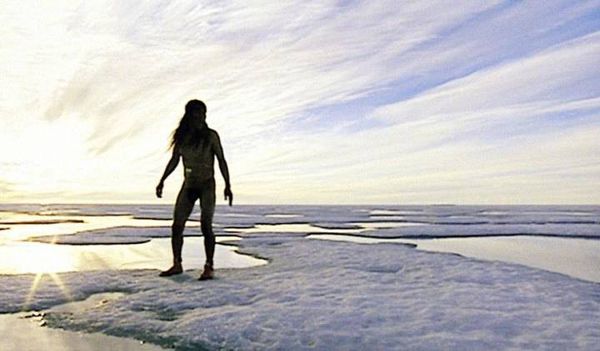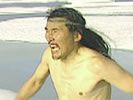Eye For Film >> Movies >> Atanarjuat, The Fast Runner (2000) Film Review
Atanarjuat, The Fast Runner
Reviewed by: Amber Wilkinson

It seems strange, that even today, when world cinema enjoys more prominence than ever before, that this is the first film to be written in the Inuit language. It is a trailblazer for its culture and certainly makes for a fascinating, if rather long, watch.
Spanning two generations, it is an epic tale of evil disrupting a small community in the Arctic wilderness. Discord has its roots in trouble caused by a shaman at the turn of the last millennium, which sees the families of Sauri and Tulimaq become embroiled in a bitter feud.

Some years later, with the growing of their sons, bad blood begins to boil. Tulimaq's offspring, Amaqjuag (Pakkak Innuksuk), the strong one, and Atanarjuat (Natar Ungalaaq), the eponymous fast runner, provoke jealousy in Sauri's son, Oki (Peter Henry Arnatsiaq), with their superior hunting skills, and when Atanarjuat wins the heart of Oki's betrothed (Sylvia Ivalu) sparks really begin to fly.
Oki plots to murder his rival, resulting in some breathtaking cinematography, as Atanarjuat runs naked across the ice floes in fear of his life. This scene alone is worth the price of the cinema ticket.
Initially, it is quite difficult to follow, but once the story starts to flow, it makes for compelling viewing. Mixing myth and oral tradition, spiritual fears and the all-too-real worry about the scarcity of food, director Zacharias Kunuk builds a complex picture of the hard life endured by generations of Inuit and how their fables teach the young the importance of putting the group's wellbeing above their own.
Performed by a cast of unknowns, it has a near-documentary feel, shot from a single camera, adding to the sense of reality and wilderness, aided by wonderful light, which might have been a reason why it won the prestigious Camera d'Or at Cannes. Twinned with a haunting score, featuring syncopated drums and choral compositions, this is an endearing film, which, while a little long at almost three hours, is still worth seeing.
Reviewed on: 10 Aug 2001




















